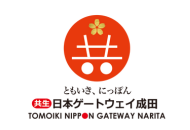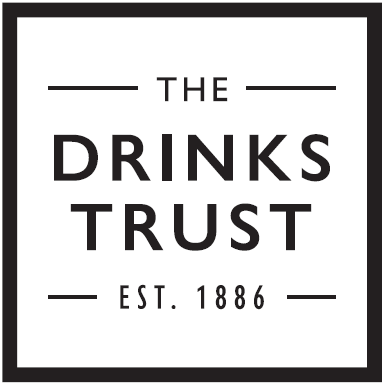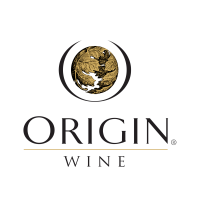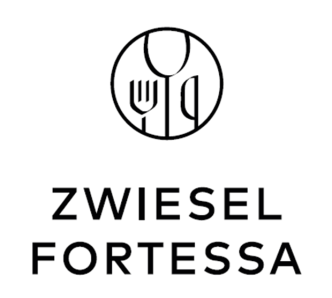They show the prized regions in major wine countries, such as France, Spain, Italy, Australia, Portugal, Argentina, and New Zealand, are producing amazing wines despite higher temperatures and increasingly erratic weather (which disrupts grape ripening and harvesting schedules) while increased frequency of droughts, frosts, and heatwaves harms yields. Top producers in Burgundy (such as Maison Albert Bichot, Edouard Delaunay, and Jean-Claude Boisset) and in Champagne (Moët & Chandon, Piper-Heidsieck, Lanson and Taittinger) are still setting the standards for red, white and sparkling wines.
The big names from elsewhere in the world are also still hitting the right notes with the IWC’s highly experienced international judges. Producers such as Penfolds, González Byass, GD Vajra, Nyetimber, Henschke, Zuccardi Valle De Uco, Emilio Lustau, Bisol1542, Bodegas Fabre, Tolpuddle Vineyard, Viña Undurraga, Rioja Vega, Bodegas Faustino, Bodegas Valdemar, Beaulieu Vineyard, Shaw + Smith, Robert Oatley, Tolpuddle Vineyard, Villa Maria, Esporão, Groot Constantia Wine Estate, Vergelegen Estate, Sandeman, and Kopke continue to score 95 points or more out 100 and show why their wines are so sought-after. All were awarded gold medals this year – after two weeks of tasting thousands of wines from 40 countries “blind and without bias”.
What’s more, the overall quality of entries appears to be on the rise. One of the six experts who check every medal awarded by the panels of judges, Sam Caporn MW, commented: “The quality has never been higher than this year.”
Fellow co-chair Dr Jamie Goode confirmed this: “Yes, the overall quality of the wines entered this year seemed up a notch on some previous years, and I’m looking forward to seeing the results.”
Co-chair Helen McGinn added: “The wines get better every year and there’s always something new to taste. Highlights include English wines, hidden gems from Spain and Italy and New Zealand reds – so good! It’s an honour and a privilege to shine a light on such brilliant wines.”
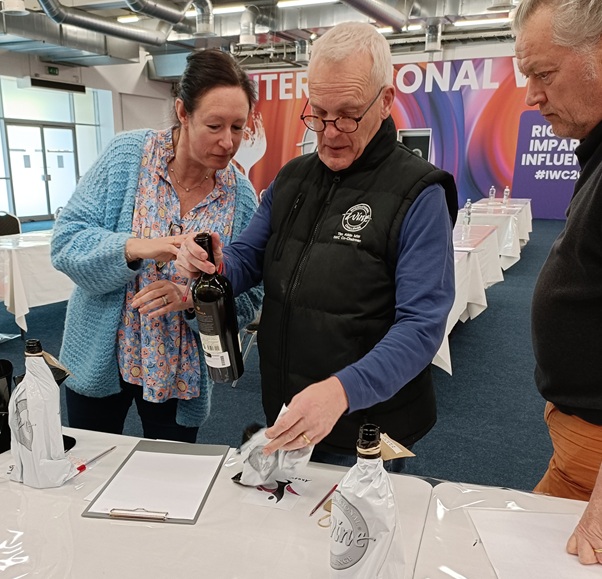
As well as telling us about the top wines, grape varieties and regions, the IWC 2025 results – available here – provide a snapshot of the industry. While global warming may not yet be altering the taste of our favourite wines, it has been a catalyst for geographic diversification and there is now a wider spread of top-quality wine regions. England, for example, is now producing top-quality white and red wines as well as world-beating sparkling wines. New Zealand is emerging as a top source for red wines, including Merlot. Canada, famous for its ice wines, now offers amazing Chardonnays, Cabernet Francs and Merlots, too! And the overall quality of wines from South Africa has reached new heights. It can provide seriously good alternatives to French wines, from Chardonnays to Cabernets. At the IWC 2025, we also tasted a fantastic Sangiovese from South Africa’s Walker Bay – Bouchard-Finlayson’s Hannibal 2021.
As Oz Clarke says: “IWC 2025 was a cavalcade of exciting wines. Top producers from all round the world measuring themselves against each other to prove their worth and winning a fabulous array of medals to take home and proudly display on their bottles.”
And here are the top wines…
France: Still the benchmark of elegance
France’s key regions of Bordeaux, Burgundy and Champagne individually won more gold and total medals than most countries. France won a total of 1,039 medals this year, including 94 golds and 402 silvers – cementing its place as the epicentre of fine wine, despite the ongoing challenge of extreme weather events, such as unseasonable frosts, heatwaves, and heavy rainfall, a shift in the growing season (earlier grape ripening), and increasing risks of crop losses from pests and diseases.In Burgundy – a region synonymous with nuanced Pinot Noirs and Chardonnays – Maison Albert Bichot was the star this year. The historic house (established in Beaune in 1831) was awarded seven gold medals. These four wines scored 97 points:
- Chablis Grand Cru Les Vaudésirs Domaine Long-Depaquit 2023
- Meursault 1er Cru Les Charmes Domaine du Pavillon 2023
- Echezeaux Grand Cru Domaine du Clos Frantin 2023
- Clos de la Roche Grand Cru Hospices de Beaune Cuvée Cyrot Chaudron 2023
The top Chablis producers were Morin Père & Fils (Puligny Montrachet 2023), Prosper Maufoux (Criots-Bâtard-Montrachet Grand Cru Les Criots 2022), La Chablisienne (Chablis 1er Cru Les Lys 2022), Domaine du Château de Meursault (Meursault 1er Cru Perrières 2023), and Simonnet-Febvre (Chablis 1er Cru Vaillons 2023).
The “thrilling” Champagnes include:
- Champagne Henriot’s Cuve 38 - La Réserve Perpétuelle Blanc de Blancs Edition 6 (96 points)
- Champagne Piper-Heidsieck’s Essentiel Blanc de Noirs (96 points)
- Champagne Lanson’s Le Clos Lanson Blanc de Blanc 2010 (97 points)
- Rare Champagne’s Millésime 2013 (96 points)
Some of France’s top wines from other regions:
- Provence – Amour 2024 from Château D’Astros
- Cahors – Prieuré de Cénac 2023 from Les Vignobles Saint Didier Parnac
- Languedoc Roussillon – Château Rouquette sur Mer Cuvée L’Esprit Terroir 2023 from Château Rouquette Sur Mer and Abbotts & Delaunay’s Languedoc Rouge 2023
- Limoux – Chardonnay Le Palajo 2023 from Domaine de la Métairie d’Alon
- Beaujolais – Morgon Grands Cras 2024 from Domaine Ruet
- Rhône – M Chapoutier won a gold medal for its “benchmark Crozes-Hermitage”, Les Moniers Rouge 2022, while Oeno Terra Sarl picked up a gold for its Reserve De La Garrigue 2023 blend.
Spain: Traditional regions continue to impress
Spain’s age-worthy reds from Rioja and Ribera del Duero continue to impress the IWC judges.Among the top examples are two 96-pointers:
- Bodegas Tarón’s Cepas Centenarias 2021, which has “sweet, heady aromas of black cherries, black berries and olive, leading to a bold, structured palate showing dense ripe black fruits with a hint of mint and a delicate herbal overlay”.
- Bodegas Faustino’s I Gran Reserva 2016, which is described by the judges as having a “wonderfully aromatic style, showing the beautifying effect good oak ageing has on top quality grapes. Full of dark strawberry and black cherry jam richness with a chewy black chocolate and black olive edge and from the beginning of autumn undergrowth maturity sprinkled with kitchen spice and incense”.
But one of the best reds came from Galicia: Pazo de La Cuesta’s Mencía 2022. The IWC judges explained: “Mencia is one of Spain’s hidden red wine jewels. A native of the far northwest, this wine is positively elegant with a mellow but fresh redcurrant and cranberry fruit, a savouriness like good pie pastry and a lingering finish.”
Galicia also proved it is Spain’s top region for white wines. Javier Gonzalez scored 96 points with its Ramon do Casar Varietal 2022 – 90% Treixadura, 6% Albariño, and 4% Godello. The judges described this wine as “bold, exuberant, but balanced with rich pear, peach fruit and even a hint of melon. Elegantly textured with lovely depth, finesse and harmony.”
Spain gained 602 medals in this year’s Challenge – including 32 golds and 242 silvers. Twenty of the golds went to Sherries from Jerez (see our separate analysis of fortified wines here).
Australia: Balance of power and precision
Australian wine is more than a big Shiraz from the Barossa Valley or McLaren Vale. From Margaret River’s Bordeaux-style blends to Tasmania’s cool-climate Pinots, the country offers refined expressions across a wide variety of styles – from fortifieds to fizz – as the IWC judges discovered.Impressed with the entries from Australia, the judges signed off 447 medals – including 51 golds and 220 silvers.
The top reds include these 96-pointers:
- Sister’s Run Bethlehem Block Barossa Cabernet Sauvignon 2022
- Charles Melton Wines’ The Kirche 2021 (a Barossa blend of 62% Shiraz and 38% Cabernet Sauvignon)
- Ponting Wines’ 127 Milestone 2022 (a Shiraz varietal from the Barossa Valley)
- Kilikanoon Wines’ Baudinet Grenache Shiraz Mataro 2021 (from the Clare Valley)
- Penfolds Bin 169 Cabernet Sauvignon 2022 (from Coonawarra)
- Paragon Wine Estates’ D Block Shingleback Reserve McLaren Vale Shiraz 2022
- Tolpuddle Vineyard Pinot Noir 2023
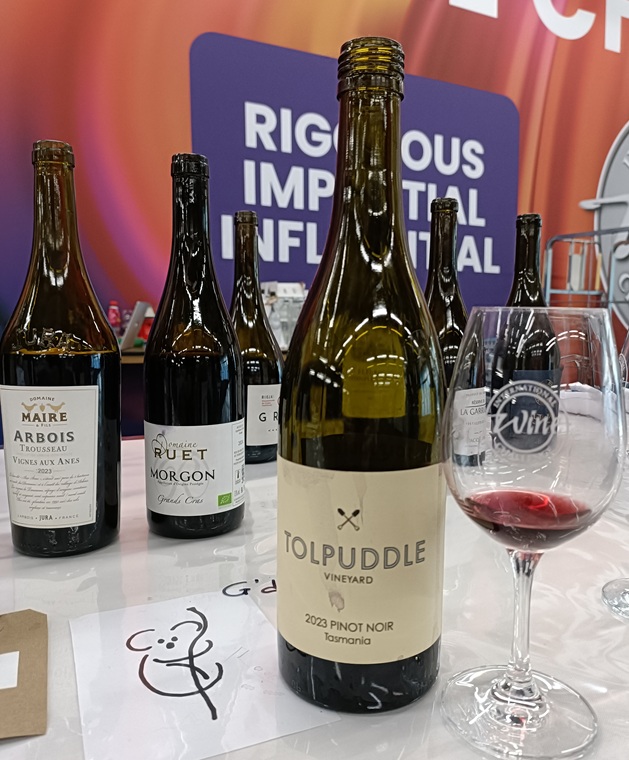
The success of a Pinot from Australia prompted co-chair Peter McCombie to comment: “Not so long ago, the words ‘cool climate Australia”’ would have been an oxymoron, but some of our favourite Australian wines in this year’s competition came from cool-climate regions. Stylish, mineral Chardonnays from maritime zones and fresh, succulent Pinot Noirs, notably from Tasmania, were among the highlights.”
Tolpuddle Vineyard’s Chardonnay 2023 scored 98 points. Several other Chardonnays scored an impressive 96 points:
- Robert Oatley Finisterre Margaret River Chardonnay 2022
- Shaw + Smith M3 Chardonnay 2023
- Victory Point Wines’ Chardonnay 2021
The top sparkling wine was House of Arras’ Museum Release Blanc de Blancs 2006 – from Tasmania and made from Chardonnay grapes.
The spread of vintages for the gold-winning wines show how well Australia’s winemakers are adapting to the new-normal: intense heatwaves and drought, pushing some regions to switch to larger canopies and night harvesting.
South Africa: The crossroads of Old and New World
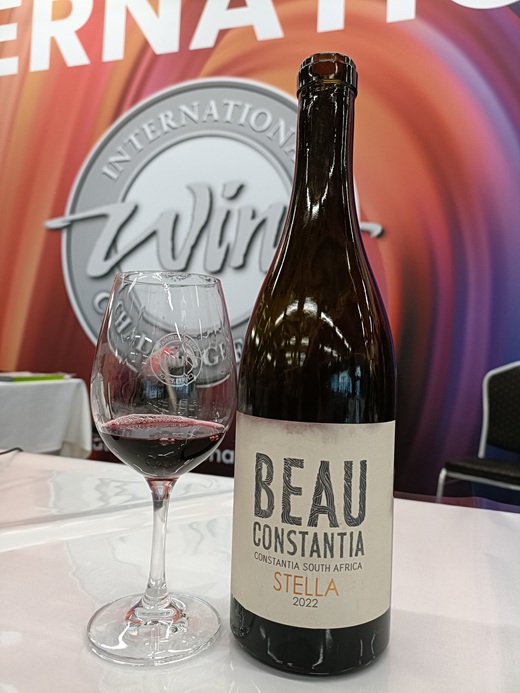
With its Old-World structure and New-World boldness, South Africa continues to impress with its modern versions of old French grapes.
Its producers were awarded 264 medals, including 23 golds and 111 silvers.
Here are some of the highest-scoring South African wines:
- Beau Constantia Stella 2022 (an “incredibly appetising” Syrah from Contantia, near Cape Town, 96pts)
- Groot Constantia Chardonnay 2024 (a “full-on, well balanced and delicious” white wine from Constantia, 96pts)
- Vergelegen Estate White 2023 (a “tangy” blend of 56% Sémillon and 44% Sauvignon Blanc from Stellenbosch, 96pts)
- Le Grand Domaine’s Grand Vin Selection Cabernet Sauvignon 2022 (Stellenbosch, 95pts)
- Hasher Family Wines’ Batrachella Pinotage 2022 (95pts and one of the best examples you will find of this South African grape). Hasher’s Marimist Chardonnay 2023 also gained a gold with 95 points.
- Boschendal’s Jean Le Long Prestige Cuvee 2012
Celebrity wines seldom have much to celebrate in major blind-tasting competitions. But former golfer Ernie Els has hit gold with his Big Easy Red Blend 2023 (95pts) and struck an above-par high silver with his Major Series Cabernet Sauvignon 2023 (93pts).
Portugal: Native varieties and age-worthy wines
Portugal is a treasure trove of indigenous grape varieties and unique terroirs. While historically known for Port wine, its dry reds and whites are increasingly capturing international acclaim.Portugal’s 446 medals included 43 golds and 160 silvers. Less than half the golds this time round went to Port and Madeira fortified wines.
Three of the top wines were produced by Ravasqueira in Alentejo, where 45ha of vines are surrounded by more than 600ha of cork forest. Its golden reds are: Guarda Rios Signature 2024, Coutada Velha Tonel nº2 2023, and Terraços de Xisto 2023. They are a collaboration between local winemaker Ana Filipa Pereira and Australian winemaker David Baverstock, who lives in Alentejo.
Among the other reds that shone:
Passarela Sociedade De Vinhos’ Fuga Doc Dão Vinho Tinto 2023 (a blend of 60% Touriga Nacional, 20% Jaén, 20% Alfrocheiro, from the Dão region, 96pts)
Quinta Vale d’Aldeia’s Grande Reserva Red 2020 (60% Touriga Nacional, 30% Touriga Franca, 10% Alicante Bouschet, from the Douro, 95pts)
The top whites include Adega Cooperativa De Ponte De Lima’s Loureiro 2024 (95pts) and Esporão’s Bico Amarelo 2024 (60% Loureiro, 20% Alvarinho, 20% Avesso, 96pts).
Italy: Diversity and innovation
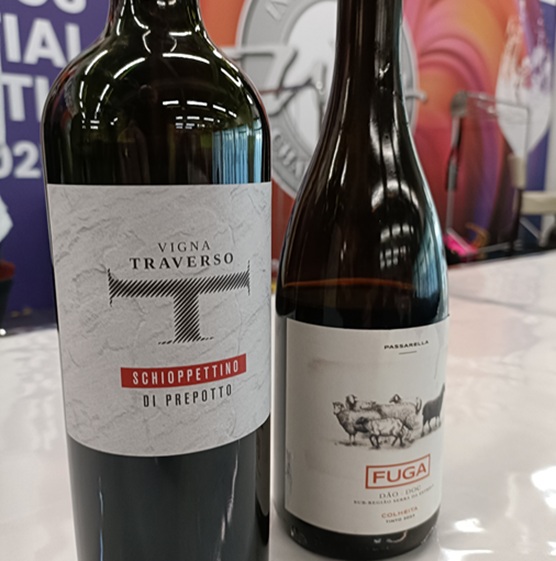
Italy, which collected 436 medals (including 14 golds and 135 silvers), offers unparalleled diversity. There were gold medals for a Schioppettino di Prepotto from Vigna Traverso and a Verdicchio from La Canosa, while one of the stand-out white wines was a blend of Garganega, Incrocio Manzoni and Müller-Thurgau: Rocca Sveva’s Chiaropuro 2024.
There were also some fantastic wines from its most famous regions.
Piedmont producer GD Vajra gained a gold with its Barolo Ravera 2021 while Veneto’s Bisol 1542 collected a gold for its Crede Brut, Valdobbiadene Prosecco Superiore 2024 (which features 15% Chardonnay) The judges said its “bold focused fruit with lovely table grape, lemon and cantaloup melon flavours… offered a lot of pleasure”.
New Zealand: Purity and precision
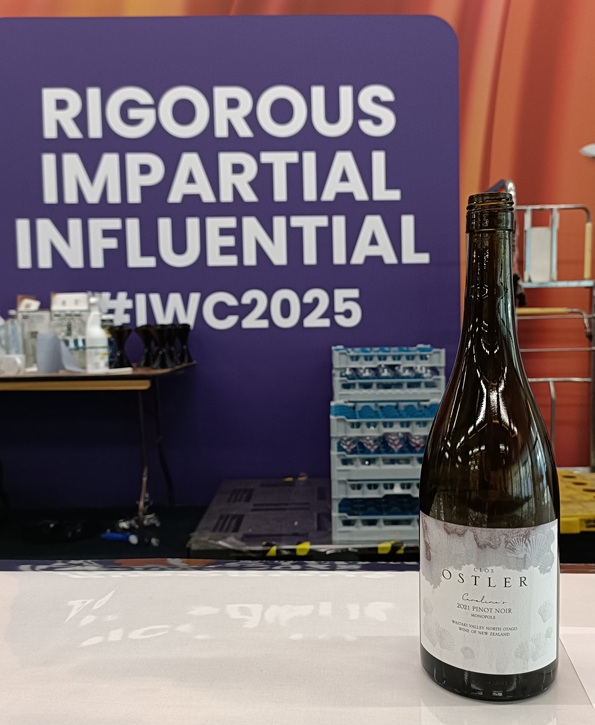
New Zealand exploded onto the world stage with Marlborough Sauvignon Blanc. Now it is proving it has much more to offer – including amazing reds.
Co-chair Peter McCombie commented: “New Zealand wines performed very well this year, with some excellent red wines, alluring Pinot Noirs and peppery Syrahs and – perhaps surprising for some – fine Bordeaux blends, as well as the more familiar whites. But even with whites, it wasn’t just reliably aromatic and fruity Sauvignon Blanc; there were elegant, gold-medal-winning Chardonnays too.”
New Zealand scored 285 medals, including 32 golds and 121 silvers.
These reds scored 96 points:
- Mora Pinot Noir 2023 from Bannockburn, Central Otago
- Clos Ostler’s Caroline’s Pinot Noir 2021 from North Otago’s Waitaki Valley
- Church Road 1 Merlot 2021 (97% Merlot, 2% Cabernet Sauvignon, 1% Cabernet Franc) from Hawke’s Bay’s Gimblett Gravels
- Glenora Estate Syrah 2024 from Auckland’s idyllic Waiheke Island
- Church Road Grand Reserve Chardonnay 2022 from Hawke’s Bay
- Marisco Vineyards’ Emma Marris Chardonnay 2023 from Marlborough
And a few that scored 96:
- Villa Maria Reserve Coastal Awatere Sauvignon Blanc 2024
- Stoneleigh Riesling 2024
- Trinity Hill Single Vineyard 125 Gimblett Chardonnay 2022
Argentina: More than Malbec

Argentina set the trends for high-altitude viticulture and Malbec. The vineyards in the Uco Valley and Cafayate (Salta), which go up to 1,500m above sea level, are proving ideal for a fresher expression of Malbec. The thin air, intense sunlight, and cool nights yield thick-skinned Malbec with vivid colour, fine tannins, and good acidity.
At IWC 2025, Argentina collected 175 medals, including 10 golds and 78 silvers. Of the 10 golds, six went to Malbec varietals: two for Bodegas Fabre, two for Zuccardi Valle De Uco, and one apiece for Bodega Luigi Bosca and El Enemigo. The seventh went to Huentala’s La Isabel Estate Cofermented Blend 2023, which blends Malbec and Cabernet Franc from Gualtallary, in the Uco Valley, in the fermentation tank.
The other two golds went to Cabernet Francs (Bodegas Fabre Montmayou Reserva Cabernet Franc 2024 and Bodega Alta Yari Gran Corte 2023).
A gold medal also went to one white wine from the Uco Valley – Fina Flichman’s Dedicado Chardonnay 2022.
Chile: Purity of Place
Known for pure, fruit-driven, good-value varietal wines, Chile is now gaining respect for its terroir-driven wines.At IWC 2025, Chile was awarded 153 medals, including four golds and 40 silvers.
The golds include the newest release of the sensational Altazor by Viña Undurraga. The 2022 vintage is 91% Cabernet Sauvignon, “positively distorted” by “small but decisive contributions” from Carignan (6%) and Carmenere (3%). The judges described it as “a classic Maipo Valley expression showing strength and high-altitude freshness. Dried herbs, plum and damson lead to a long finish with sinewy tannins and gripping acidity for structure and lift.”
Viña Undurraga also collected a gold medal for its Trama Pinot Noir 2023.
Chile’s other two gold medals went to Wine Company Chile for its Viña Indómita Co-op Irresistible Pinot Noir 2023 and Viña Bouchon for its Granito Semillón 2023.
United States: Fascinating expressions
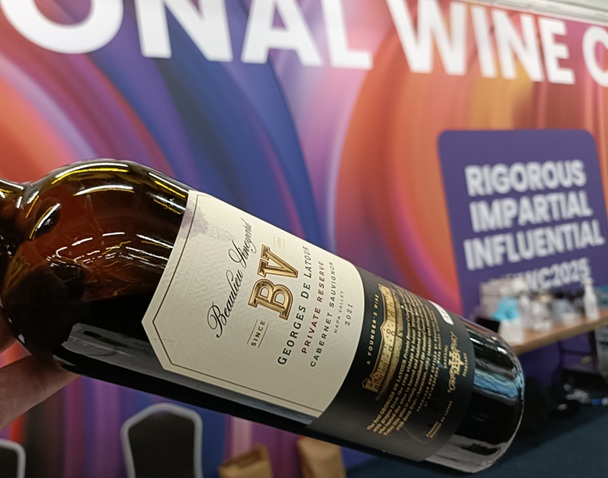
The USA, particularly California, has cemented its reputation with bold, expressive wines. Napa Cabernet rivals Bordeaux, while Oregon’s Willamette Valley produces world-class Pinot Noir.
The USA was awarded 33 medals, of which four were gold and 11 were silver.
The golds all came from California. One is a very good example of a Napa Valley Cabernet – the Georges de Latour Private Reserve Cabernet Sauvignon 2021 from Beaulieu Vineyard. It has 6% Petit Verdot.
Two are non-vintage sparking wines from Chandon: Its Reserve Meunier and Étoile Brut.
The fourth gold is from the Torres family’s beautiful Marimar Estate in Sonoma – the La Masía Chardonnay 2023, which undergoes eight months of ageing in French oak barrels.
England: Sparkling AND still success
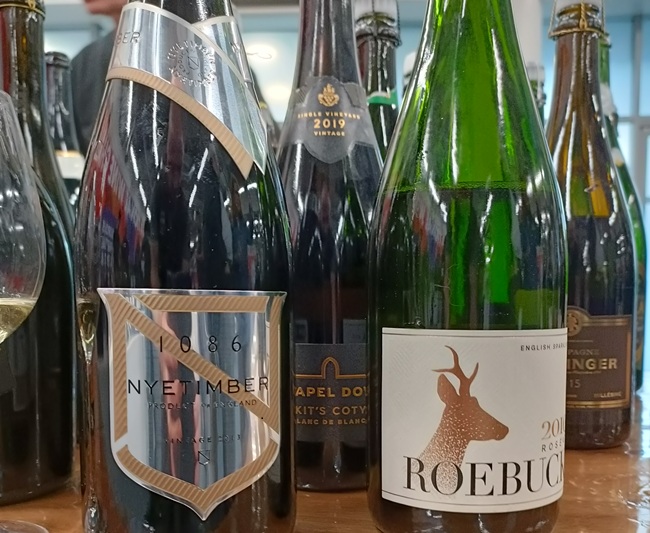
Southern England’s fast-growing wine industry is one of the beneficiaries of climate change. Over the past 20 years its sparkling wines have steadily been improving and acquiring critical acclaim. Now the still wines are making giant strides forward.
This year at the IWC, England gained 126 medals – including 15 golds and 59 silvers.
Nyetimber collected three gold medals. These were for its Blanc de Blancs 2016 Magnum, 1086 Rosé By Nyetimber 2013, and 1086 By Nyetimber 2013 (a blend of 51% Chardonnay, 40% Pinot Noir and 9% Pinot Meunier).
Roebuck Estates, which is about 11 miles from Nyetimber, collected two gold medals. These were for its Rosé Reserve 2019 (95% Pinot Noir, 5% Pinot Noir Precoce) and Rosé de Noirs 2019.
Chapel Down Kit’s Coty vineyard also produced two gold medal winners: the Kit’s Coty Blanc de Blancs 2019 and Coeur De Cuvée 2016.
Other outstanding English sparkling wines included Henners Vintage 2018, Camel Valley Pinot Noir Rose Brut 2022, The Grange White From White 2018, Harrow & Hope Blanc de Blancs 2020, and Hattingley Valley Blanc de Blancs 2017.
Perhaps the most surprising gold was the one for a Seyval Blanc sparkling wine. The judges said the Kingsthorne’s Seyval Blanc Brut 2017 was “a distinctive wine for this unmistakable variety”.
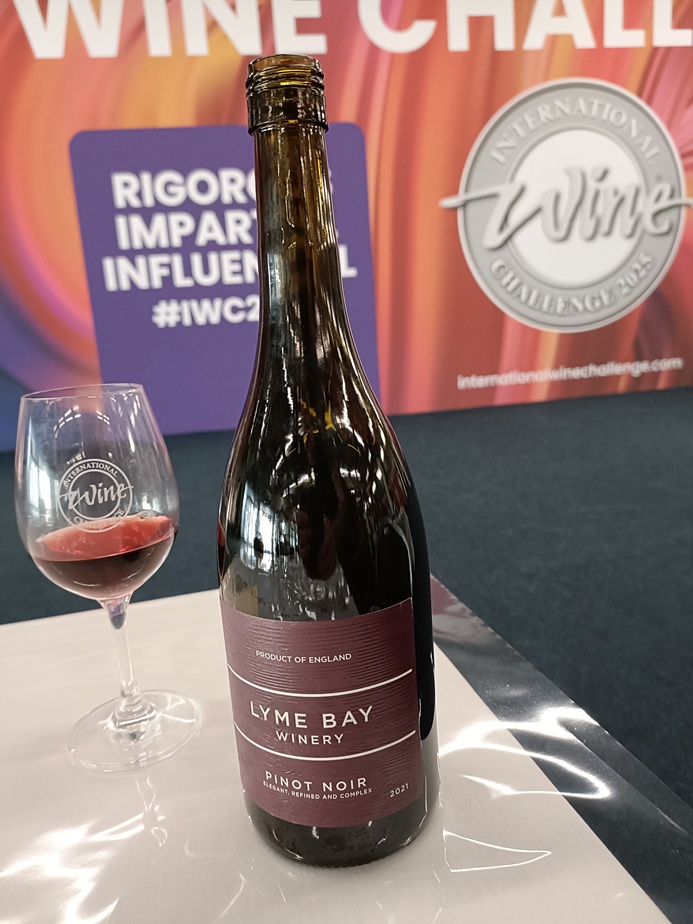
Among the top still wines were two from Lyme Bay Winery:
- The “elegant” Pinot Noir 2021
- And the Martin’s Lane Chardonnay 2020 – which made the judges exclaim: “Burgundy, eat your heart out!”
Rising Stars: Emerging Wine Regions to Watch
Warmer climates make previously unsuitable regions viable for growing wine grapes, allowing the global wine map to expand to southern England, Scandinavia, parts of Canada and China, and southern Brazil.In these new wine regions, some classic grape varieties are ripening most vintages and producing some thrilling wines (see below for our pick of them).
The variety of wines – from 40 countries this year – is part of the appeal of judging at the IWC. Co-chair Sam Caporn MW comments: “Alongside wines from classic regions of both the Northern and Southern Hemisphere – whether that be Champagne or Chianti, the Clare Valley or Constantia – there are always lots of entries that surprise! There were wines from China, India, Brazil – showing huge promise – Turkey, Egypt and Japan and so it’s a great way to get an overview of the world of wine and to be able to reward those rising stars alongside those that are already more established.”
Fellow co-chair Oz Clarke added: “This year’s International Wine Challenge produced the broadest range of medal-winning regions and countries that I can recall. Wonderful wines from Spain, Portugal, Italy and France, but also tremendous showings from countries like New Zealand and Australia. I was particularly impressed by the rising standard of wines from newer countries like North Macedonia, and excited and intrigued by the range and quality of wines from Japan. And I was thrilled and proud when faced with the spectacular quality of the English wines. If English wines want to prove themselves against the best in the world, the International Wine Challenge is the place to do it.”
Top wines from emerging regions
Canada is trying to redefine itself beyond ice-wines (which claimed the majority of the country’s nine gold medals). The Okanagan Valley’s significant diurnal shifts yield elegant reds and complex whites, while Ontario shines with Riesling and traditional-method bubbles. A great example of the quality that can be reached in Canada is the gold-winning Le Clos Jordanne Le Grand Clos Chardonnay 2022 from Arterra Wines Canada.With substantial investment and experimentation, China is rapidly expanding in both quantity and quality. Ningxia, with its high-altitude vineyards, is leading the charge with Bordeaux-style reds like China Great Wall Five Star G9 Dry Red Wine 2022 (80% Cabernet Sauvignon, 20% Marselan) – which the IWC judges said was “impressive without trying too hard”. China is also helping to raise interest in Marselan, a cross between Cabernet Sauvignon and Grenache. Xinjiang Silk Road Vineyards’ Bird’s Nest Marselan 2023 won a gold. Proving China can also make superb sweet wines, there was a gold for Domaine Franco-Chinois’ Petit Manseng 2019.
Brazil’s southern highlands are producing intriguing wines with unexpected freshness. Brazil gained 55 medals this year, of which 16 were silvers. Cooperativa Vinicola Garibaldi took four silvers for sparkling wines. Vinícola Salton took two for its sparkling wines. Vitivinicola Jolimont took silvers for its Cabernet Sauvignon Gran Reserva 2017, Chardonnay Reserva 2023 and Touriga Nacional Querências do Sul 2023.
Peru is also slowly establishing itself on the international wine scene. This year one producer, Viña Tacama, collected five medals: two silvers and three bronzes. The grapes behind the medal-winners include Malbec, Carmenère, Tannat, and Petit Verdot.
Flagship grape varieties prove themselves
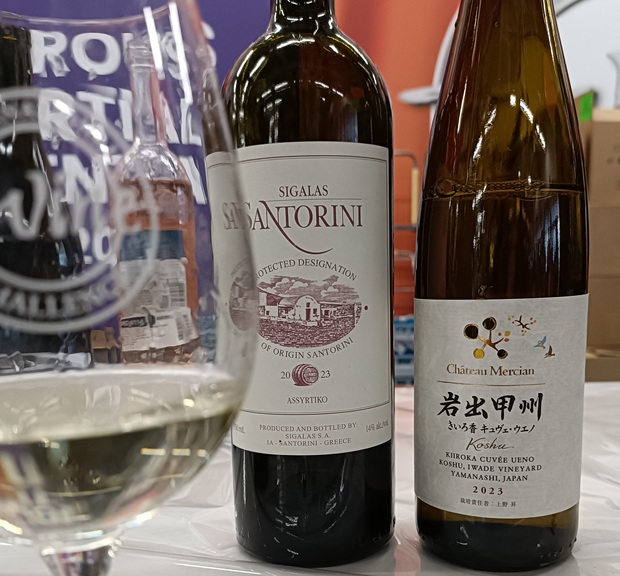
Many emerging regions are leveraging their native, signature grapes to craft food-friendly wines with elegance and longevity.
Assyrtiko from Santorini is now a global darling for white wine lovers and helped Greece to secure four gold medals. Three of them went to Santorini’s Domaine Sigalas and the other to Kyanos Wines by Michael Kouloglou.
Uruguay offers fresh, Atlantic-influenced wines. Its signature grape, Tannat, is being reimagined into softer, more drinkable styles. Leading producer Bodega Garzón collected two silver medals for Tannat wines (Petit Clos Block 212 Tannat 2020, Single Vineyard Tannat 2020) and another for its Single Vineyard Albariño 2023.
Istria’s flagship white grape, Malvazija Istarska, brought Croatia three golds. The producers are Tomaz, Damjanić, and Rossi.
Japan, which only started winning gold medals last year, collected six this year among its total haul of 126 medals (including 41 silvers). The star grape is Japan’s signature variety, Koshu. Château Mercian scored 96 points with its Iwade Koshu Kiiroka Cuvée Ueno 2023 which the judges described as: “Pale ethereal, understated and effortlessly complex with aromas of camomile and lime blossom, with a tangy kiwi fruit and citrus palate. Wet stone minerality and an elegant, gentle yet crisp conclusion.” Ten days of juice stabulation at low temperatures is the key to getting extra aromas and flavours here. Château Mercian also struck gold with its Mariko Omnis 2018. Other top Koshus came from MGVs winery (K235 Ichinomiya Utsugida 2020) and Pino Collina Matugaoka (Tsuruoka Koshu 2023). Suntory gained golds for a Chardonnay and a sparkling wine made from Chardonnay and Pinot Noir.
Germany continues to impress with its flagship grape, Riesling. Domdechant Werner’sches took two golds and Weingut Hans Wirsching took another.
But neighbour Austria is also producing some top Rieslings. Weingut Birgit Eichinger scored 96 points with her 2023 wine from top site Heiligenstein and 95 with her Riesling from Gaisberg. However, there was also a gold for Austria’s signature white grape, Grüner Veltliner. Petra Unger was the producer of the Ried Hintere Point 1ÖTW Erste Lage Grüner Veltliner 2023.
Hungary’s signature white grape, Furmint, gained Hungary’s only gold – which went to Tornai Pincészet for its Somlói Top Selection Apátsági Furmint 2021.
Georgia’s signature red grape, Saperavi, scored golds for JSC Telavi Wine Cellar and Teliani Valley.
North Macedonia’s Tikves Winery collected seven silver medals and eight bronze medals for a wide range of wines, mostly red. The country itself scored 37 medals, of which 14 were silver and 17 were bronze.
Top 10 countries by total medals
France 1039 (including 94 golds and 402 silvers)Spain 602 (including 32 golds and 242 silvers)
Australia 447 medals (including 51 golds and 220 silvers)
Portugal 446 (including 43 golds and 160 silvers)
Italy 436 (including 14 golds and 135 silvers)
New Zealand 285 (including 32 golds and 121 silvers)
South Africa 264 (including 23 golds and 111 silvers)
Argentina 175 (including 10 golds and 78 silvers)
Chile 153 (including 4 golds and 40 silvers)
England 126 (including 15 golds and 59 silvers)
Japan 126 (including 6 golds and 41 silvers)
The unique process behind these results
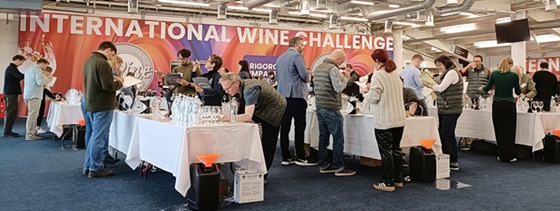
To uncover the best wines without any bias or prejudice, thousands of wines are blind-tasted in London over a two-week period, and over two rounds – with every decision scrutinised by the co-chairs: Tim Atkin MW, Sam Caporn MW, Oz Clarke, Dr Jamie Goode, Peter McCombie MW and Helen McGinn.
Goode explains some of the benefits of this unique system: “I’m quietly confident that our two-tier judging process, with the co-chairs harmonising the results of the panels and looking for wines that might have been missed, will result in some great results.
“Judging the IWC is a really interactive process. I really think that having judges standing up and discussing the wines results in panels that work well. The buzz on the tasting floor is palpable. Not only are judges working hard, they seem to be having fun, too. And I think this results in better judging.”


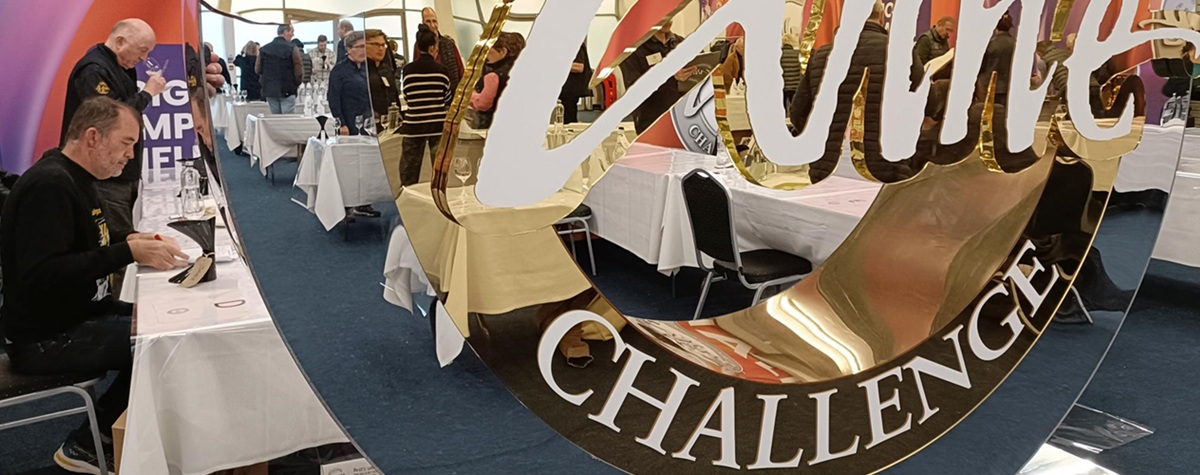




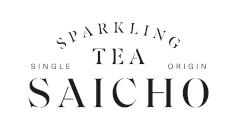




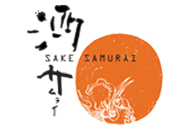
.png)
